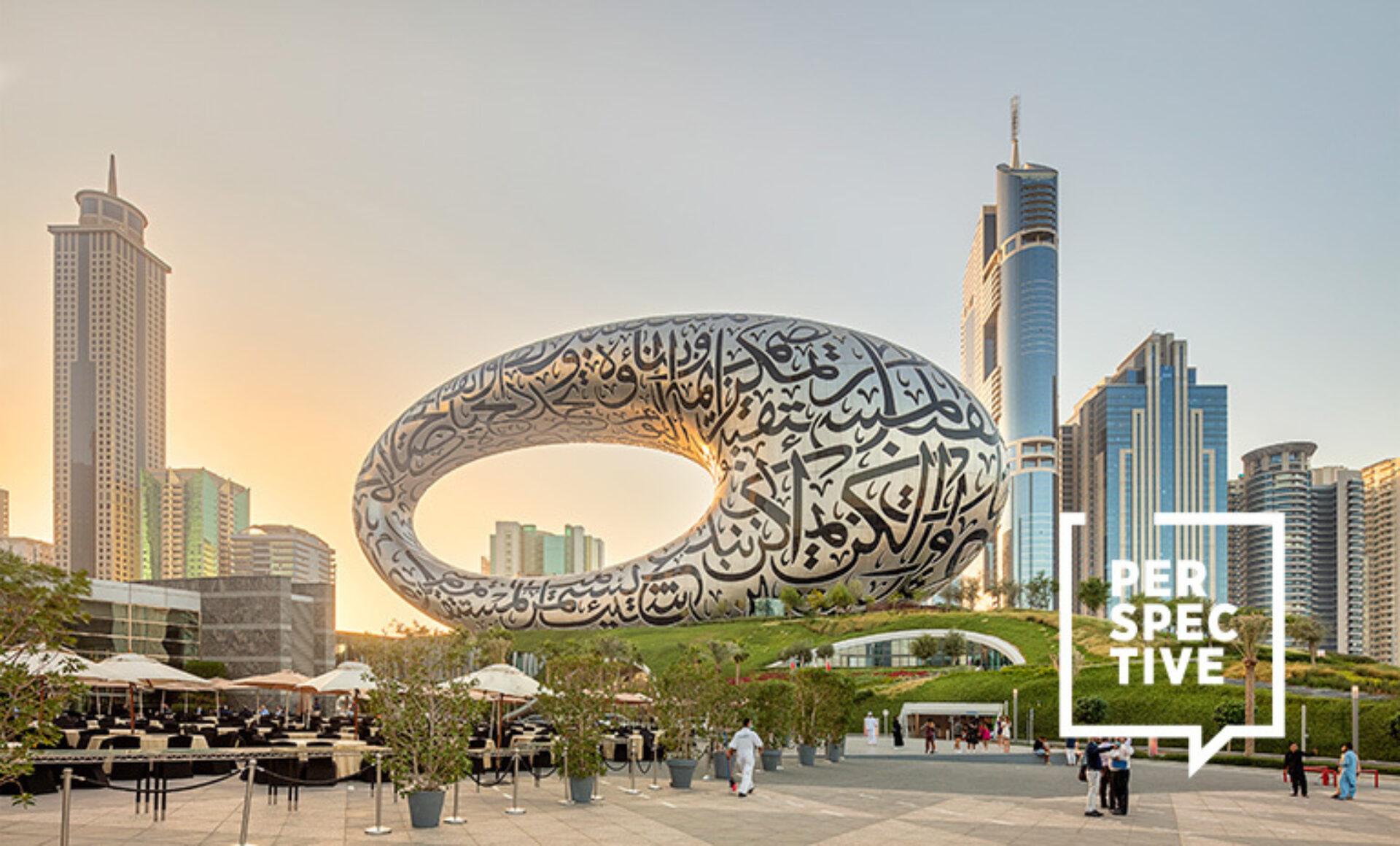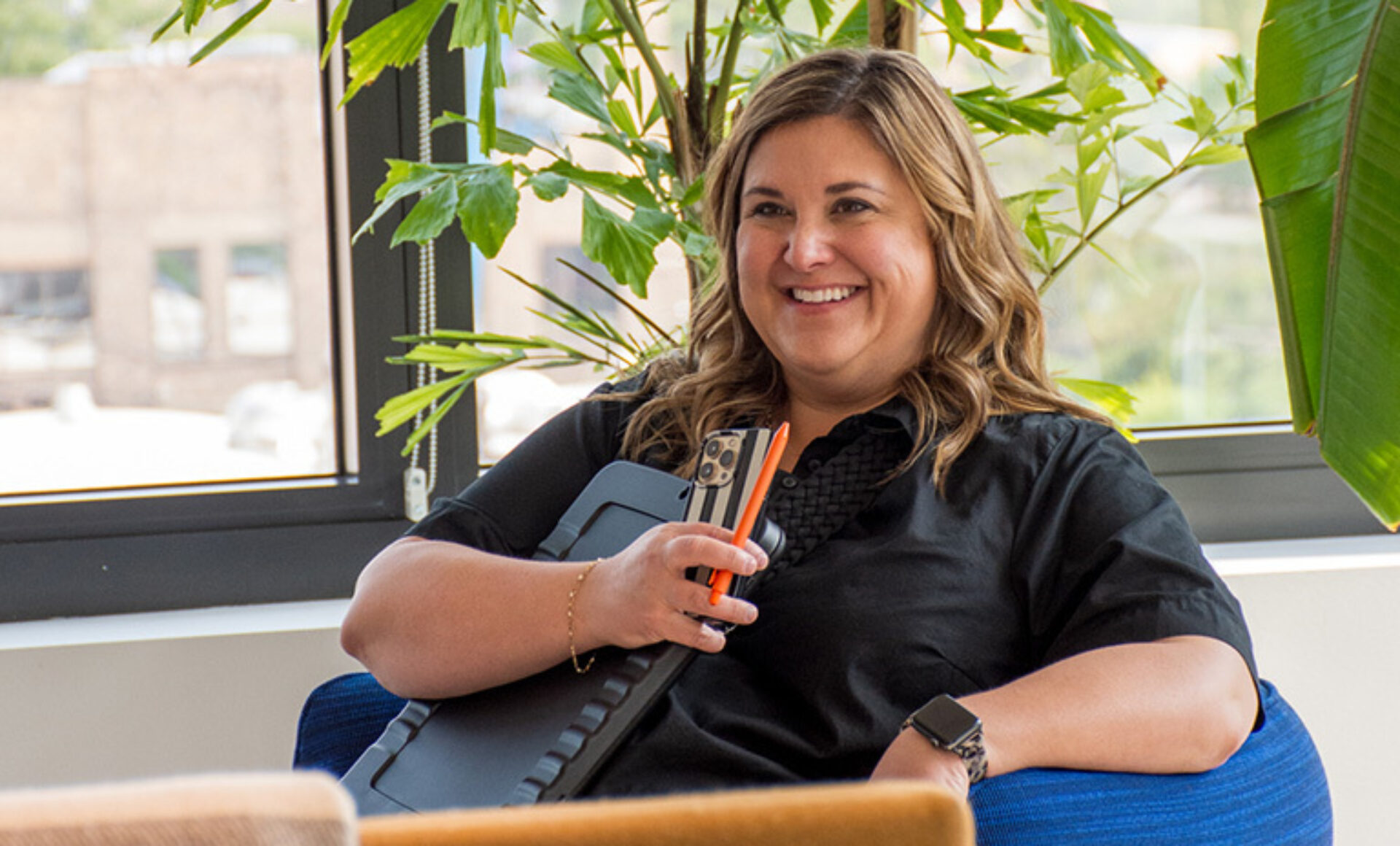You may have heard about IIDA’s new Certified Design Futurist (CDF) program, and you may have questions — lots of them. (Design professionals tend to be inquisitive types.)
Maybe you’re thinking: What on earth do design futurists actually do? What unique skills do they possess? How do I become one … and should I? How could CDF help my design career?
We’ve got answers to these common questions and more, courtesy of our Futurist-in-Residence, Mark Bryan, IIDA, a senior foresight manager at the Future Today Strategy Group (FTSG) and the instructor behind IIDA’s design futurist certification course. Read on to gain a deeper understanding of the CDF program and precisely how it can help you level up your skills and prepare today for tomorrow’s design landscape.
What exactly is the CDF program?
A 10-week certification course in which design professionals learn to practice strategic foresight, a rigorous, systematic approach to identifying a range of plausible futures to ensure resilience in the face of unforeseen disruption. The program is asynchronous, so participants can create their preferred schedule and study at their own pace. (Do your best thinking at 4 a.m.? No problem.)
After completing the course, designers receive a certificate, can use the “CDF” (Certified Design Futurist) appellation in their professional title, and walk away with a powerful new skill set.
Is the course based on actual science?
You bet. The course is built on the methods of renowned quantitative futurist Amy Webb, founder and CEO of FTSG, who was commissioned by IIDA to create a one-of-a-kind curriculum, specifically for designers and the design industry.
What will I learn?
The CDF program teaches design professionals how to examine 11 macro sources of change, which are the primary sources of change in the world. These include shifts in governments, wealth distribution, geopolitics, education, demographics, infrastructure, the environment, health, the economy, media, and technology.
The course also considers changes in human-centric behaviors, including cultural, professional, and aesthetic shifts. That said, by examining the 11 macro sources of change, you’ll gain a broader view of the world and the future versus just an internal industry perspective. You’ll learn to think more expansively and dig deeper.
This is why the CDF program, and strategic foresight — are both rigorous. You’ll be taught how to look for actual data that proves present and future change. You’ll learn to go beyond news articles and search for materials like unpublished white papers and patent filings.
What does a design futurist do?
Design futurists harness strategic foresight to clarify how people, clients, businesses, and users will act and behave, what their needs will be, and how the use of products and space will shift, creating a range of plausible futures in the next 5, 10, 15, and 20 years.
I keep hearing “strategic foresight.” What is it? How does it work?
Strategic foresight starts with data, leveraging what we can know about the future today to develop trends. These are not “trendy” trends; they are actual patterns that shape human and business behaviors and can be backed by metrics and key performance indicators. Based on the data from today’s trends, strategic foresight uses the uncertainties of tomorrow to explore plausible futures.
Deeply considering what’s ahead and designing accordingly isn’t a new idea. Designers already apply futurist thinking every day — creating spaces that must meet client needs years or decades into the future. What the CDF program offers is formalized training to turn those skills into a structured, recognized competency that enhances designers’ careers and expands firms’ scope.
Okay, but how can CDF help design firms and manufacturers?
Firms and businesses are becoming more multi-disciplinary. Design forecasting not only has benefits at the project level, it has impact for firms and for the industry overall, and, perhaps more importantly, it represents a new offering for clients.
The world has always been changing, and the design industry has always adapted. Why is the CDF course worthwhile right now?
We are, without question, in an era of extraordinary change. From the ascension of artificial intelligence to shifting global politics and new ways of working, learning, and living, the pace of change is rapid. If we miss the opportunity to properly analyze what’s ahead, we’ll find ourselves living in a future someone else designed.
The time is now to create a roadmap to our preferred future — for our clients, for ourselves, and for the continued health and viability of the design industry — and to do that, we need the right tools.






